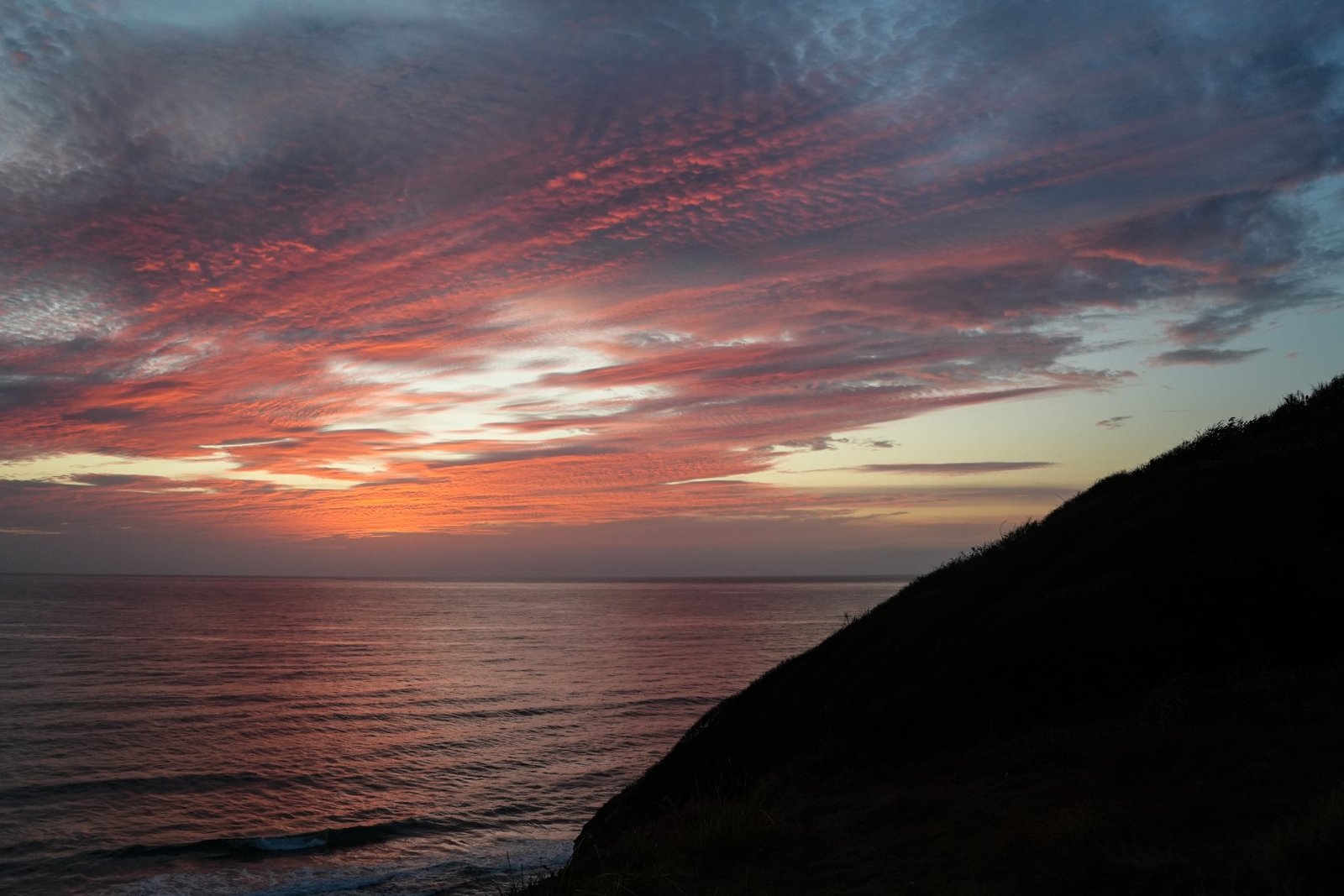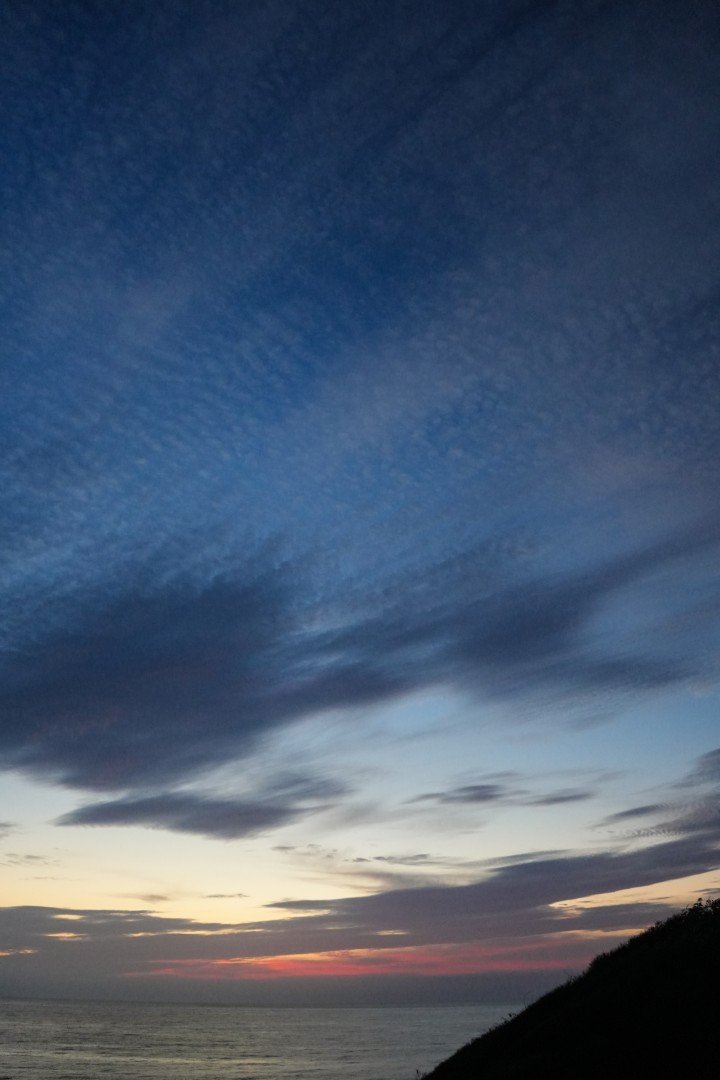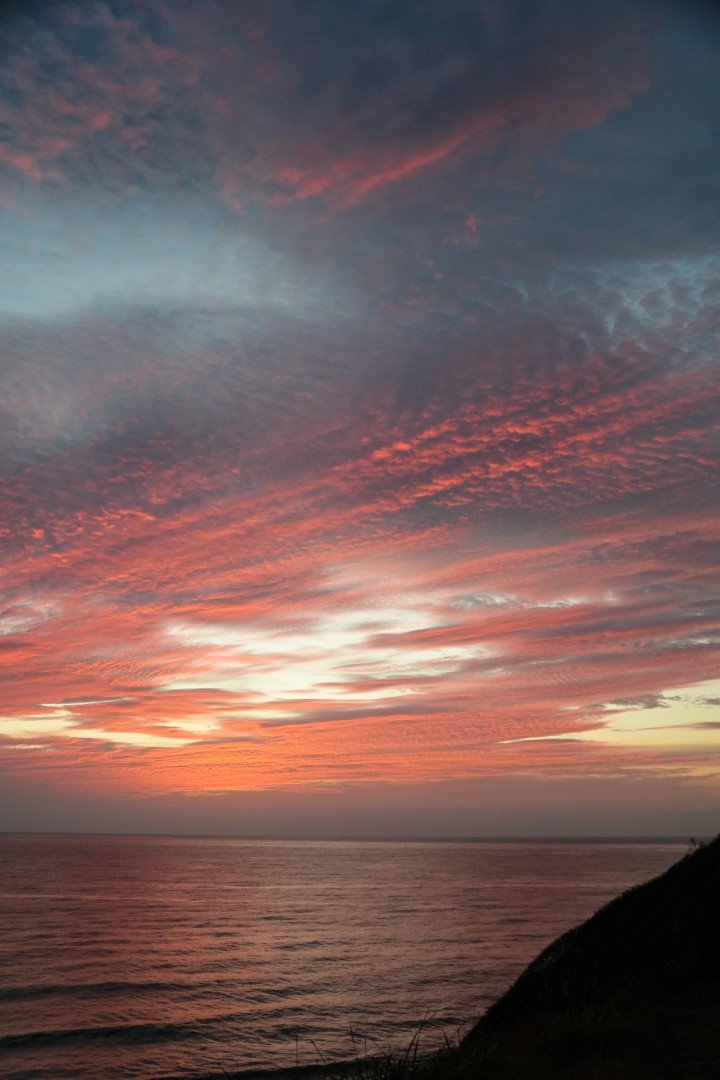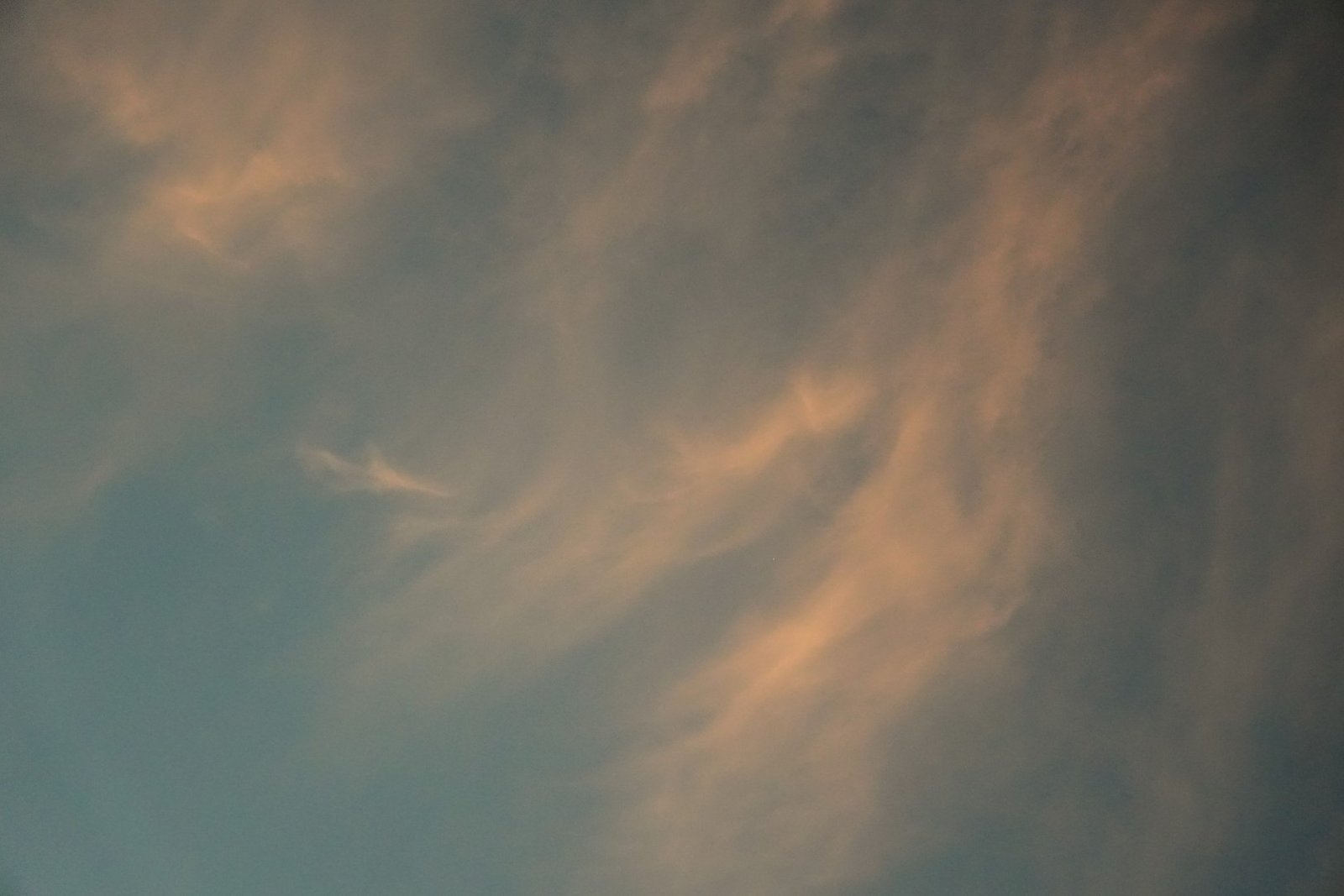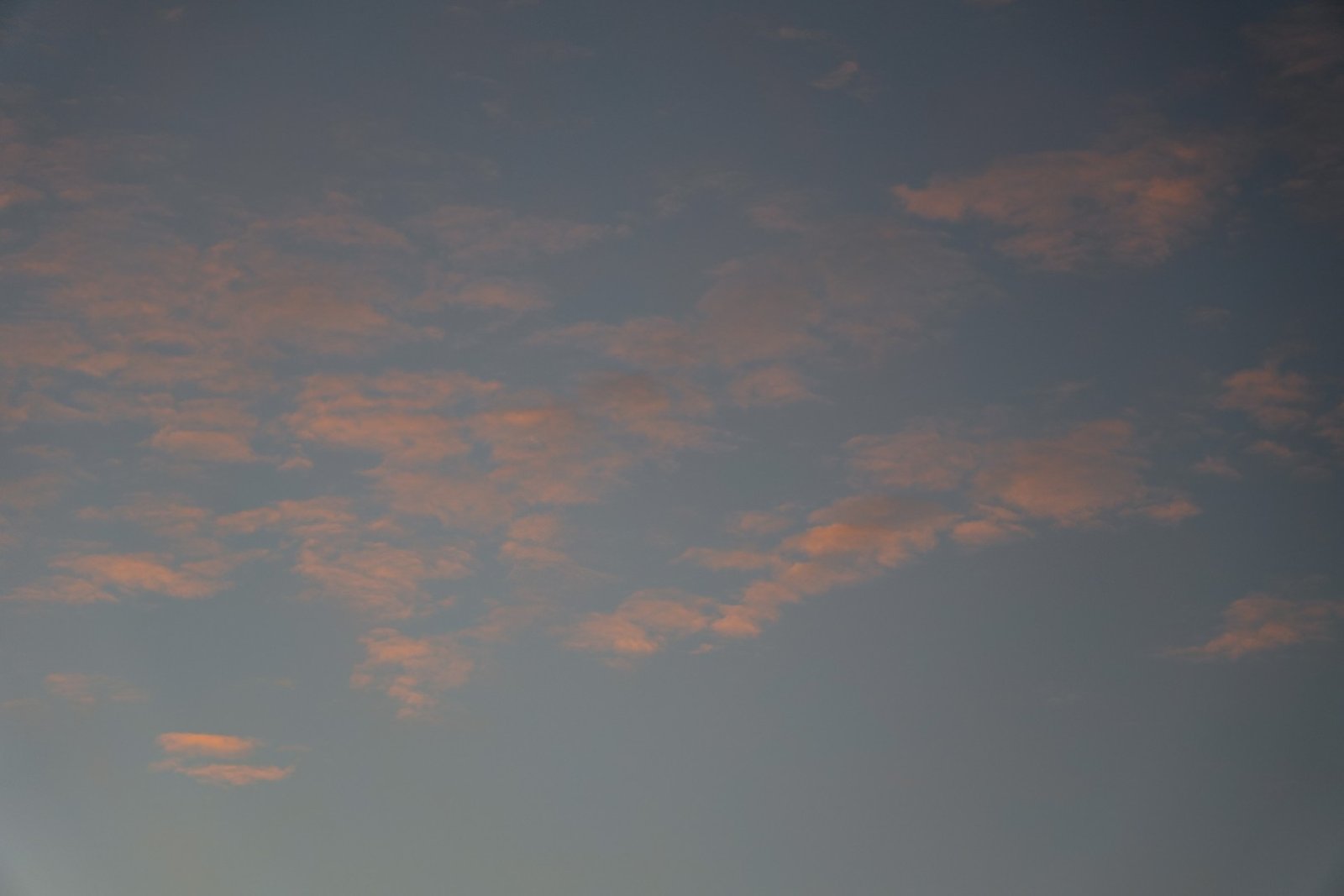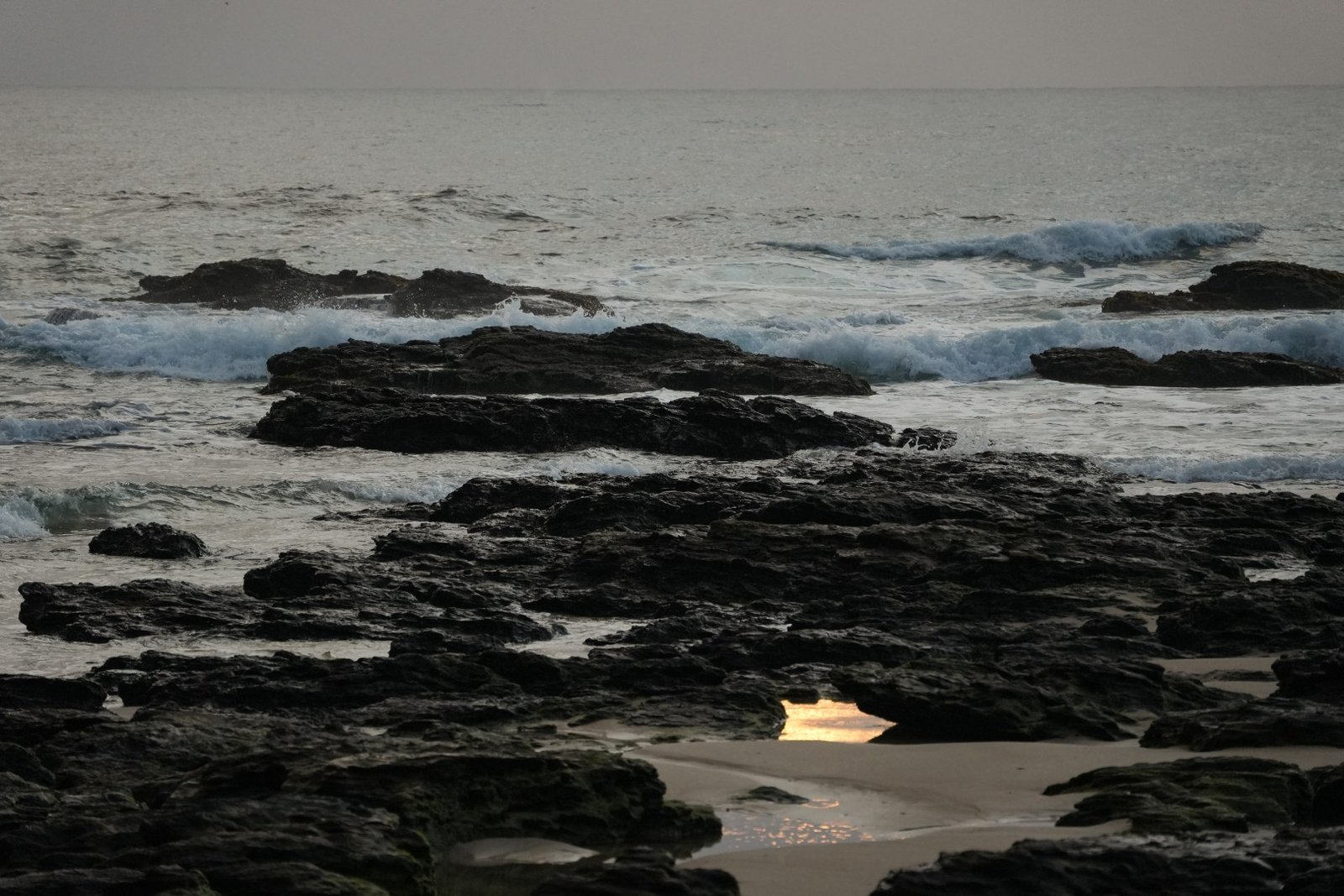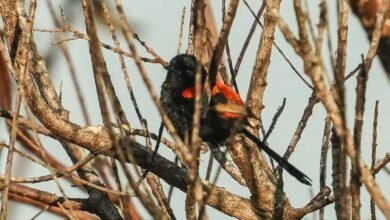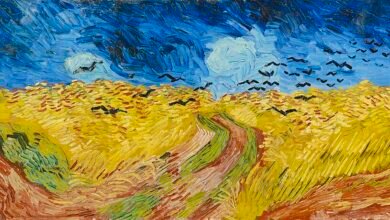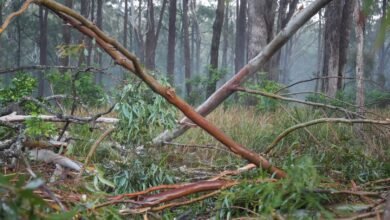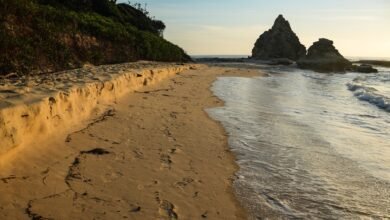‘The clouds, not being much liable to man’s interference, are always beautifully arranged’ John Ruskin[i]
The Eastern horizon has let go of the sky which is being hauled overhead ferrying clouds and colours, forms and formless, continually in flux, formations expanding beyond our field of vision unravelling remnants of future skies. We have to let them unfold – we are not in control.
My multimedia exhibition ‘First Light – from Eos to Helios’ didn’t explore clouds in much detail.[ii] Eos refers to new beginnings as light starts to overwhelm the night. Experiencing Eos gives some sense of our ancestors’ experience of waking to a world before farming, roads or cities, before writing, wheels, windows, before electrification or algorithms. With no need so early, to think of what to do (hunt for food, dig for water, search for shelter, check your phone, make breakfast, look for a job, go to work), one can momentarily immerse oneself in nature’s presence.
Experiencing Eos also opens us to the aesthetics of clouds, usually more colours than red sunsets. And we forget that clouds bring life as rain and are alive with fungi, bacteria and viruses. A world without clouds would leading to the melting of polar ice caps, massive coastal flooding, and the eventual exhaustion of freshwater and desertification of the planet.
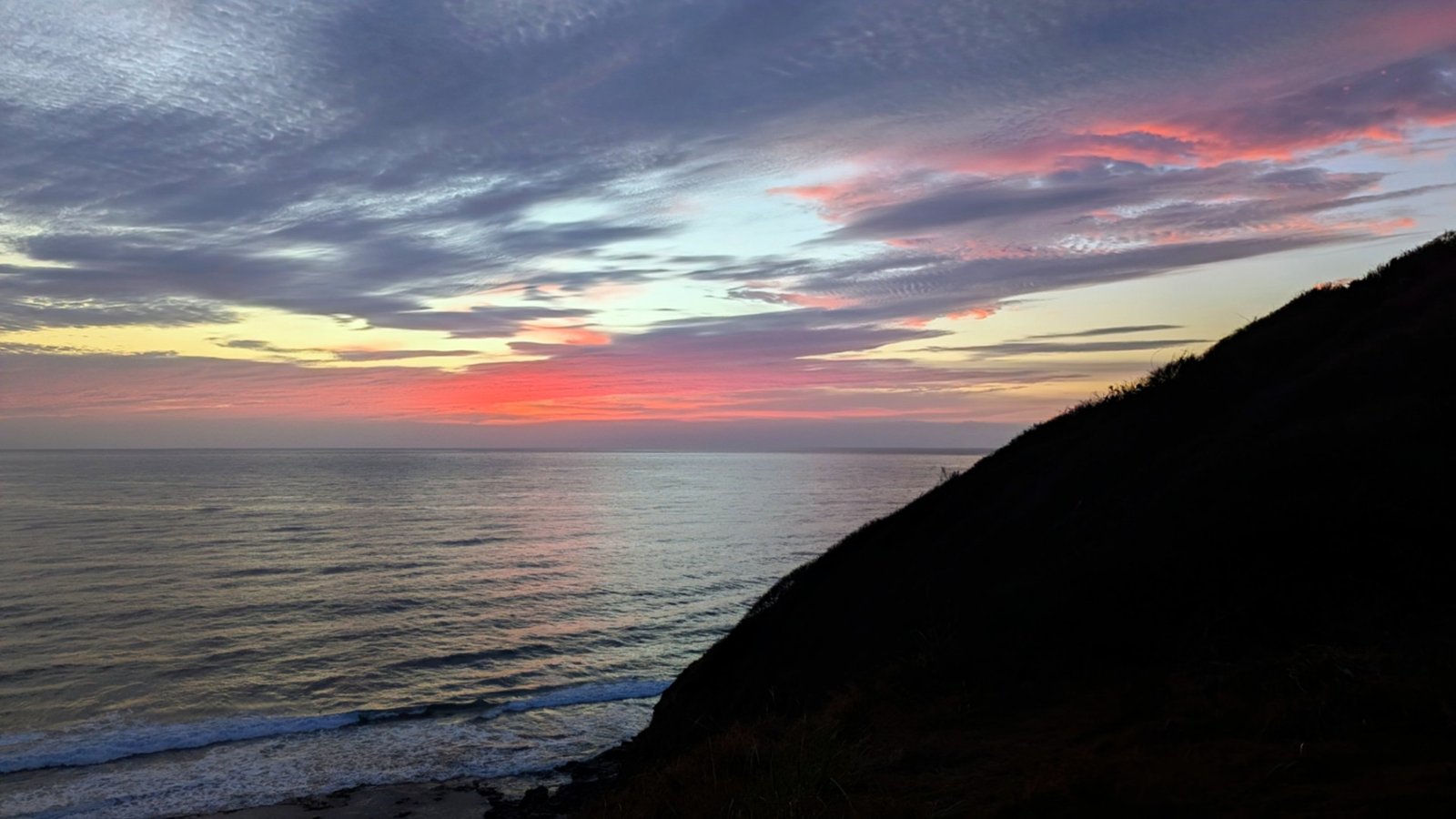 Stratus on the horizon, 26 Oct 2025
Stratus on the horizon, 26 Oct 2025
Clouds cover about two-thirds of the planet at any oen time. Computer simulations point to clouds becoming scarcer as the planet warms. Fewer white clouds reflecting sunlight back into space will mean the Earth heats up triggering more cloud loss. This feedback loop will make clobal warming spiral out of control.
Eos vs art
Many artists have used clouds as a symbol of the Divine. Michelangelo painted clouds in ‘The Last Judgement’ on the heavenly ceiling of the Sistine Chapel (c. 1540).
Alexander Cozens, a landscape artist using watercolours, was one of the first artists to seriously study skies and clouds in the 1750s.[iii]
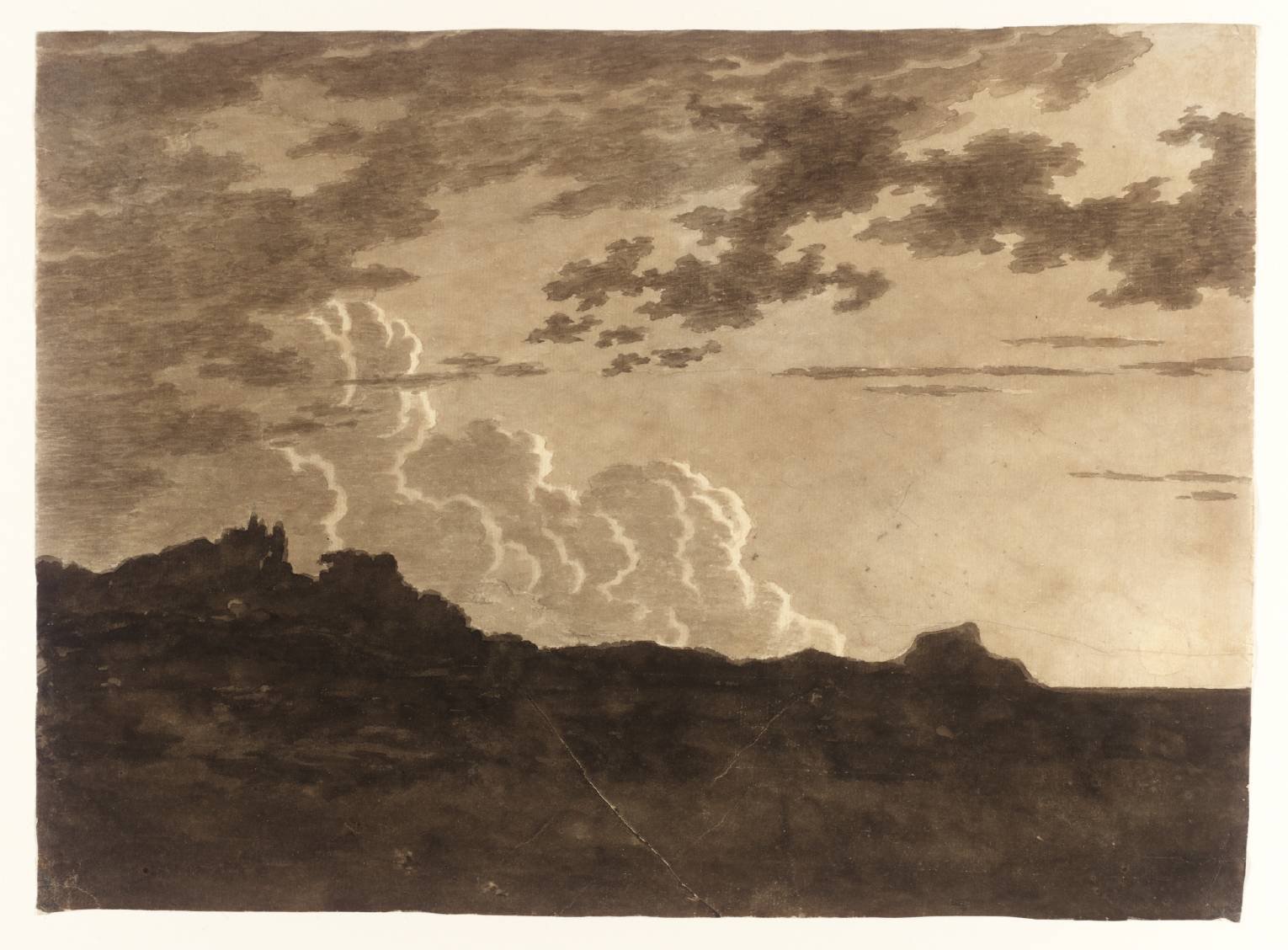 Alexander Cozens, The Cloud c.1770.
Alexander Cozens, The Cloud c.1770.
Cozens influenced John Constable who was a generation younger.[iv] Constable went ‘skying’ (his term), painting clouds at different times of the day and year. He sometimes used them when composing his large paintings which used a low horizon to emphasise the sky. ‘I have done a good deal of skying…That Landscape painter who does not make his skies a very material part of his composition – neglects to avail himself of one of his greatest aids . . . ‘the chief organ of sentiment’ in any landscape. The sky is the ‘source of light’ in nature – and governs everything.’[v]
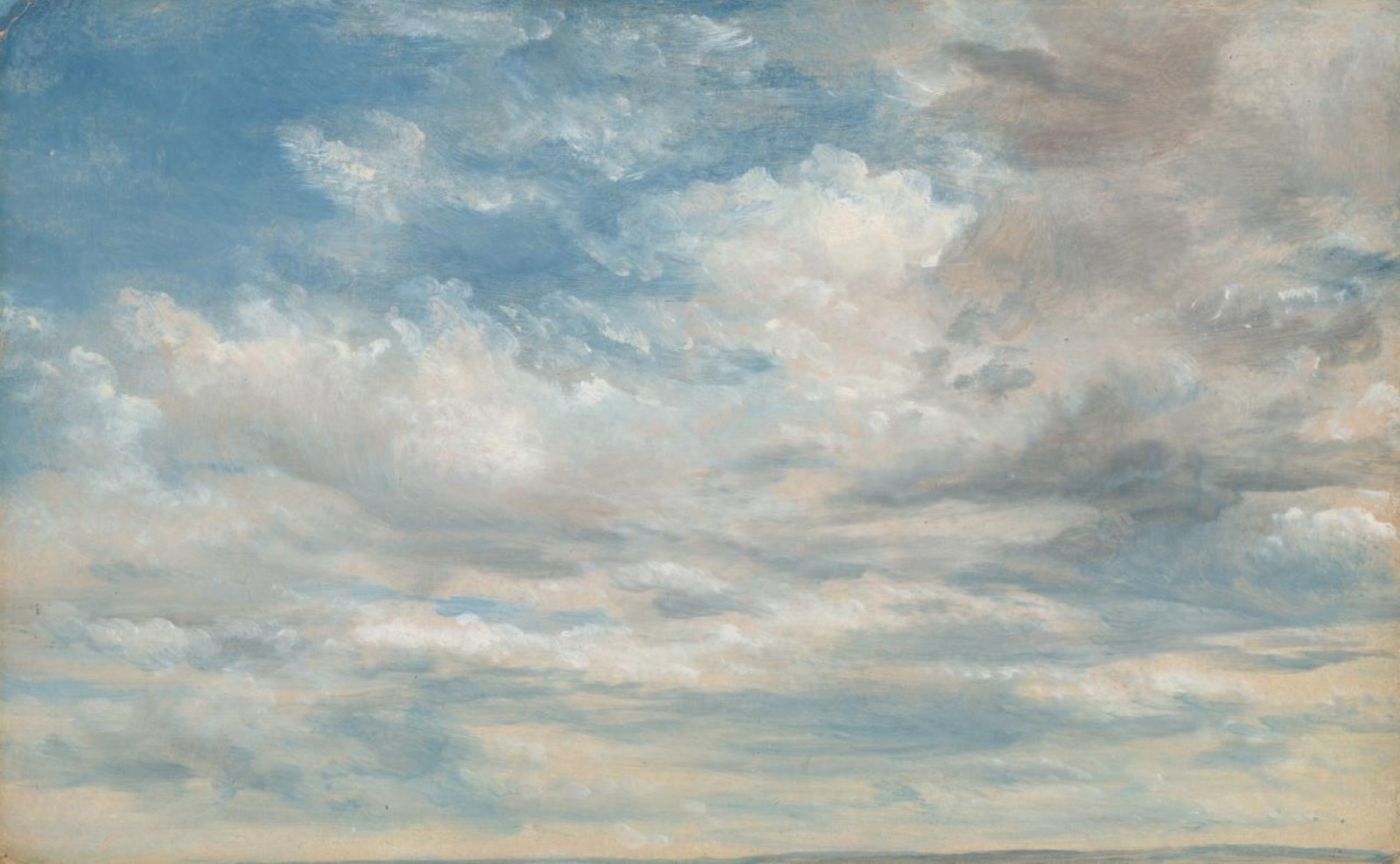 John Constable, Clouds, 1822. National Gallery of Victoria,
John Constable, Clouds, 1822. National Gallery of Victoria,
Between1821 and 1822 Constable frequently painted London’s Hampstead sky, quickly noting on the back of his sketches, date, time, temperature, wind direction etc. A scientific interest, but also one I link to Ruskin’s notion of the importance of drawing daily as practice for seeing the world. Constable showed what Ruskin meant by: ‘The truths of nature are one eternal change — one infinite variety.’[vi]
Meteorologists can sometimes calculate the season and even the hour from his skies. However, Ron Broglio argues that Constable does not use the classifications of meteorologists Luke Howard and Thomas Forster, but rather registers each cloud as unique in time and form so that you can read clouds as ‘ecological agents’. [vii] In fact, there is no evidence that Constable was aware of Howard’s classifications.[viii]
‘Cirrostratus, however, is remarkable for exhibiting a great variety of beautiful colours, according to its variation in density . . . They have been well described by the ancient poets, who have likewise spoken of them as precursors of the rain and tempestuous weather.’ Thomas Forster[ix]
Mary Jacobus links these clouds to the Romantic imagination: ‘Clouds, for Constable, were a source of feeling and perception, an ‘Organ of sentiment’ (heart or lungs) as much as meteorological phenomena. If painting is another name for feeling, and the sky an organ of sentiment, then his cloud sketches are less a notation of changing weather effects than a series of Romantic lyrics: exhalations and exclamations, meditations and reflections, attached to a specific location and moment in time.’[x]
This canvas is free. In comparison a painting is static, even one sold for US$210 million in 2015 and currently estimated to be worth $310 million (Paul Gauguin’s Nafea Faa Ipoipo (When Will You Marry?) painted in 1892 during his first trip to Tahiti. This canvas offers a small slice of yellow sky with a few vague cumulus clouds. We can’t own the sky- that’s the difference, greed and desire for cultural capital ?>>
vs the ocular
This canvas can overwhelm but the ocular is enriched by the other sense, the birdsong, the music of the river and the sea, the haptic of the sea breeze on my skin, walking around to see various views
We love fireworks why not Eos? A larger colour palette than sundown, glassless and transparent to beauty
Early photographic plates were more sensitive to violet and blue wavelengths so record photographers exposed the plates longer landscape which overexposed the sky and lost clouds. Even properly exposed skies were a problem as blue and white registered with same tonal values on these plates. Some photographers hand-painted clouds in or used a combination of prints.
Alvin Langdon Coburn was photographing clouds from at least 1906.
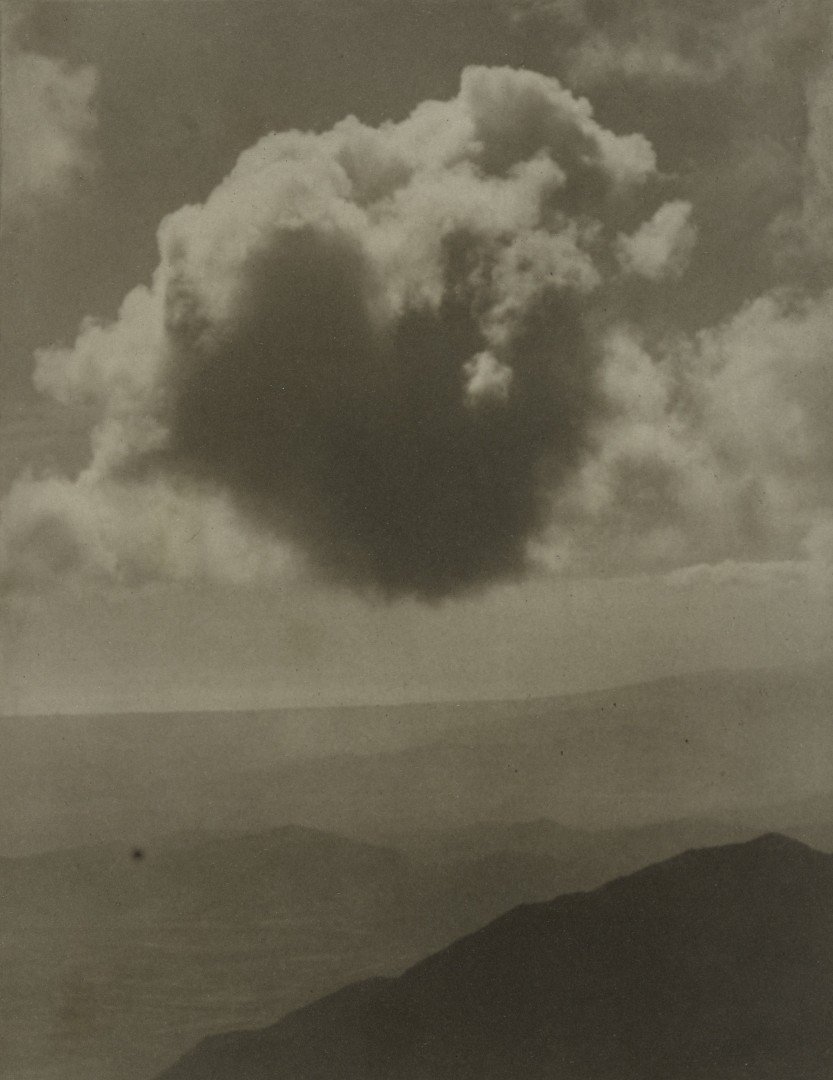 Alvin Langdon Coburn. The Cloud. 1912. MOMA
Alvin Langdon Coburn. The Cloud. 1912. MOMA
‘Clouds are especially good subject matter for the photographer. The versatility of the Great Creator of Clouds is almost unbelievable and yet the fact is ever before us to excite our wonder. The patterns of moving clouds and water are never the same from now to all eternity, and these patterns are ever moving to our continual delight. I have made hundreds of photographs of clouds and never tire of them.’ Alvin Langdon Coburn. [xi]
The sky is uncontainable but photographers of the 20th century have tried. Alfred Stieglitz took a series of photographs of clouds from 1925 to 1934 which he titled, Equivalents’, the visual as equivalent to an emotion. He wrote, ‘Through clouds [I wanted] to put down my philosophy of life—to show that my photographs were not due to subject matter—not to special trees, or faces, or interiors, to special privileges, clouds were there for everyone—no tax as yet on them—free.’[xii]
He thought of them as as abstract as music an inspiration for the Equivalents (reflected in early titles like ‘Music: A Sequence of Ten Cloud Photographs (1922).’[xiii] They are often thought to be among first completely abstract photographic works of art, free of the subject and literal interpretation. But Alvin Langdon Coburn was making abstract cloud studies from 1906 at least.
Edward Weston travelled to Mexico and was freed from his studio in California, ‘The first image with artistic intention that Edward Weston made in Mexico was of a cloud. Stopped in the port of Mazatlan on his way to Mexico City in 1923, Weston, for the first time in his career, was moved to photograph the sky. He wrote, ‘Next to the recording of a fugitive expression, or revealing the pathology of some human being, is there anything more elusive to capture than cloud forms! And the Mexican clouds are so swift and ephemeral, one can hardly allow the thought, ‘Is this worth doing?’ or, ‘ls this placed well?’—for an instant of delay and what was, is not!’.[xiv] He had to improvise and be free when his subject was cloud. He photographed clouds, along with just about everything else, all his life.
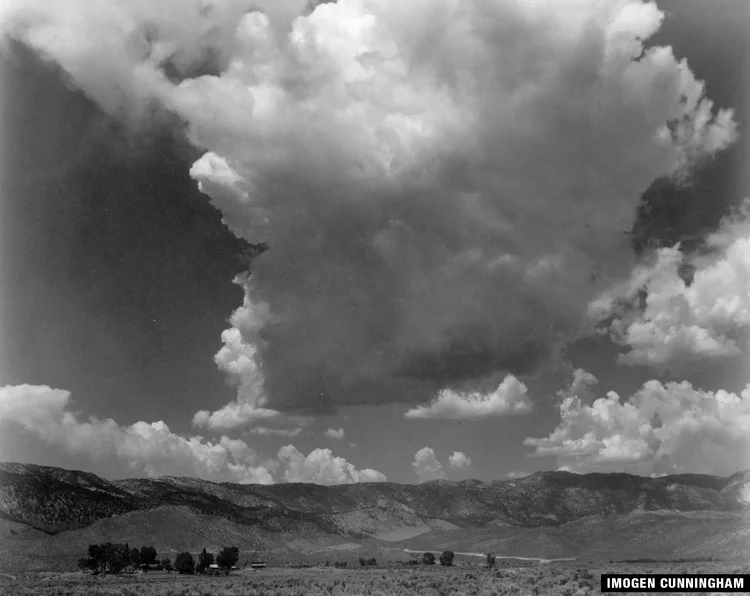
Imogen Cunnigham, Clouds, c1932
Imogen Cunningham was a photographer for six decades of a wide range from portraits to abstract forms. She made beautiful cloud studies in the 1930, but was best known for her botanical photography. She remarked, ‘I had three children in two years, what could I do? I didn’t have any choice; I couldn’t get out of the garden.’[xv]
The German painter Gerhard Richter made a series of cloud paintings in the 1970s based on photographs. He wrote, ‘The clouds are caught in a moment of confrontation between the painterly and the photographic, the representative and the abstract, the natural and the supernatural.’[xvi]
Literature
Writers have mentioned clouds from the beginning: ‘A black cloud arose from the horizon’, before the great flood in ‘The Epic of Gilgamesh’ (the earliest poems date to around 2000BCE).
‘The Life of Tu Fu’ poems by Eliot Weinberger is an experimental biography based on Tang poet Du Fu’s original poems, and not formal translations. I have fond memories of visiting his cottage in 1981, making the biography more real – though no-one spoke English back then in Chengdu, and I had three phrases of Chinese:
He said: ‘At fifteen you’re sent north to guard the river; at forty you’re sent west to the forts. Those who make it back home have grey hair; the rest are bones in some field.’
Half the people of Ch’in are now the wandering ghosts of the unburied. In the abandoned villages, the new ghosts are in torment and the old ghosts weep for them.
He said: ‘To kill a man, I’m taught, first shoot the horse. I watch the clouds, but can’t follow them away.’[xvii]
From Devon, spring 1818, Keats wrote to his friend Benjamin Haydon full of life, looking forward to that summer as a, ‘Prologue to the Life I intend to pursue. I will clamber through the Clouds and exist. I will get such an accumulation of stupendous recollections that as I walk through the suburbs of London I may not see them—I will stand on Mount Blanc and remember this coming Summer when I intend to straddle ben Lomond—with my Soul!’ That summer Keats moved into his brother’s home in Hampstead to nurse Tom. Tom died of tuberculosis in December that year.[xviii]
‘In a world otherwise silent
people – only people – chatter away.
what’s more, sun and trees and clouds
are unconscious of their beauty.’
Shuntaro Tanikawa, from 62 Sonnets (1953). [xix]
The most famous cloud in English poetry is not even a cloud – ‘I wandered lonely as a cloud That floats on high o’er vales and hills / When all at once I saw a crowd, A host, of golden daffodils.’ Written in 1804, these lines came from a walk William Wordsworth took with his sister Dorothy at Ullswater in the Lake District. And from his sister’s journal: ‘When we were in the woods beyond Gowbarrow park we saw a few daffodils close to the water side. We fancied that the lake had floated the seeds ashore and that the little colony had so sprung up. But as we went along there were more and yet more and at last under the boughs of the trees, we saw that there was a long belt of them along the shore, about the breadth of a country turnpike road. I never saw daffodils so beautiful . . .’ [xx] There wasn’t a lonely cloud as she reports, ‘Rain came on—we were wet’. And he wasn’t lonely, he loved his sister.
As a child, my favourite poem was Sea Fever by John Masefield (1902):
I must down to the seas again, to the lonely sea and the sky,
And all I ask is a tall ship, and a star to steer her by . . .
And all I ask is a windy day with the white clouds flying . . .
This was at an age when I still liked to look for faces or animals in clouds (pareidolia, the brain finds familiar patterns). (I still do but very rarely).
The English poet Peter Robinson is landscape poet who often mentions clouds:
‘Drowned leaves glaze the standing water
and puddles in a pitted car park
film dark-mottled clouds above them
whatever else there is to say – . . .’ , from ‘Blind summits’.[xxi]
Clouds have an energy, a variety of forms, are often beautiful, often harbingers of weather, no wonder most people are fascinated by them. Here is a poem of mine:
The diversity of clouds – 4 Aug 2024.
I pause Claude Debussy’s Trois Nocturnes,
boisterous Kookaburras are celebrating something.
What are ears for, apart from alerting us to Sabre-tooth Tigers
or machines burning inside, or the melodies of birds.
My pen scrapes across tree-skin, a faint earth hums
from the stereo. There’s nothing through the window
temporary relief from the desires of consumerist eyes.
Forests are a beautiful concept, like poems, light pools
on my desk-mess, topped with Friday’s ‘Pelicans’
the scrawl not yet transcribed into print for legibility.
I stretch, the trees have become real, brush blue.
I climb the stairs to survey the each of this place.
Cirrus, a fleece of ice crystals is being combed above,
to the north float pointillistic Cirrocumulus,
to the west, delicate ribbons of Altocumulus glow.
Invisible energies are jostling in the atmosphere.
I sense diversity fosters wonder. Let’s worship clouds,
water, wind, rain, evaporation, and not mention floods
the Rapture, the word of the lord, or politicians,
or what we did in the holidays.
‘More light!’ Johann Wolfgang von Goethe’s last words
[i] John Ruskin, Letter II, The Elements of Drawing, J.M. Dent, 1920.
[ii] Coffs Harbour Regional Gallery, from July 9, 2017.
[iii] ‘A treatise Cozens was working on in the late 1760s and early 1770s [was], ‘The Various Species of Composition of Landscape, in Nature’. This treatise was apparently never published in full, but it seems to have been a very complicated system indeed. The landscapes, made up from a selection of sixteen ‘compositions’, fourteen ‘objects’ and twenty-seven ‘circumstances’, were intended to arouse specific emotions on those who viewed them, and to have a positive moral effect.’’ https://www.tate.org.uk/art/artworks/cozens-the-cloud-t08057
[iv] Cozens invented complicated systems for composing landscapes with attention paid to the treatment of atmospheric ‘circumstances’ for dramatic effect.
[v] John Constable, letter to his friend Rev. John Fisher, 23 October, 1821. His plein air oil paintings were part of a tradition dating back two hundred years (Velázquez).
[vi] John Ruskin, Modern Painters, Vol3. Of Many Things, Smith, Elder, & Co. 1856.
[vii] Ron Broglio, Technologies of the Picturesque: British Art, Poetry, and Instruments, 1750-1830, Associated University Presse, 2008. Luke Howard, a Quaker chemist from London, classified clouds as cumulus, stratus, and cirrus in his ‘Essay on the Modification of Clouds, 1803. Howard introduced some order into what had often seemed the chaos. Goethe was a fab of Howard’s endeavours.
[viii] Christopher Benfey, ‘Head in the Clouds: Why was the painter John Constable so obsessed with clouds?’, Slate, Feb 02, 2011.
[ix] Thomas Forster, Researches about atmospheric phaenomena, Baldwin, Cradock and Joy, 1815.
[x] Mary Jacobus, Romantic Things: A Tree, a Rock, a Cloud, U of Chicago P, 2012.
[xi] Alvin Langdon Coburn quoted in 1966. https://photogravure.com/collection/the-white-cloud/
[xii] Alfred Stieglitz, ‘How I Came to Photograph Clouds’, Amateur Photographer and Photography 56 (1923). In Richard Whelan, ed., Stieglitz on Photography: His Selected Essays and Notes, Aperture, 2000, p237.
[xiii] https://archive.artic.edu/stieglitz/equivalents/
[xiv] Edward Weston Daybook, Cloud, Mexico, 1926, https://www.getty.edu/art/collection/object/1043YG
[xv] Voice over in Meg Partridge, ‘Portrait of Imogen’, Pacific Pictures, 1987.
[xvi] see ‘Gerhard Richter: The Secrets Of Clouds’, Sotheby’s catalogue https://www.sothebys.com/en/articles/gerhard-richter-the-secrets-of-clouds
[xvii] Eliot Weinberger, The Life of Tu Fu, New Directions, 2024. Du Fu was writing poems from the early 730s until his death around 770 CE .
[xviii] In February 1820, Keats took an open carriage from London to Hampstead in a bitter winter and arrived home chilled and feverish. He got into bed and coughed some blood on his pillow. He knew what it meant
[xix] Tanikawa was a pioneer of modern Japanese poetry, and translator (of the Peanuts comic strip). He died in 2024 aged 92.
[xx] Dorothy Wordsworth, Grasmere Journals, April 15, 1802.
[xxi] https://fortnightlyreview.co.uk/2022/02/robinson-blind-summits-r2/
